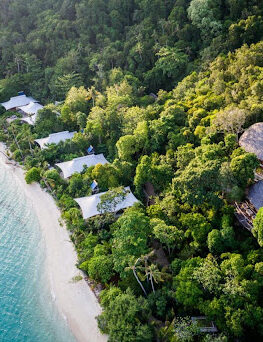Published on June 1, 2014
On Friday, 30 May at 15.55 hrs Central Indonesia Time, Mt. Sangiang, located on the north-east-most edge of the island of Sumbawa in the province of West Nusatenggara erupted, spewing a plume of over 3,000 meters of thick black clouds of volcanic ash into the air.
With winds blowing south east, volcanic ash in no time covered much of the island of Sumbawa and neighbouring East Nusatenggara islands of Sumba and Flores. Soon news was received that Darwin airport in North Australia had to close to all its domestic and international flights as volcanic ash from Mt. Sangiang had drifted even to reach Australia.
But the International Airports of Bali and Lombok have, thankfully, remained unaffected and are operating as per NORMAL. Until Sunday, 1 June, Bali airport continued to report a safe visibility of 2,500 meters, while at the Lombok International Airport visibility remained CLEAR at 2,000 meters, reports Kompas daily. Although a number of flights from Darwin to Bali and Lombok were forced to be cancelled.
The Ministry of Transportation, meanwhile, has given Notice to Airmen (Notam) that the smaller airports of the city of Bima on Sumbawa and Tambolaka on Sumba island have also been closed.
On Saturday, 31 May, three more powerful eruptions occurred, covering territories south of the volcano and more of Flores to be poured with volcanic ash. At Labuan Bajo, the public was warned to wear masks.
On Saturday, the Komodo Airport at Labuan Bajo on Flores, was also closed.
Garuda Indonesia, meanwhile, cancelled flights to Kupang on Timor island, for fear that the dangerous silica particles of the eruption may enter the jet’s fuselage, and of course no flights are operated to closed aiports until the situation has cleared. Flight cancellations, therefore, remain in force indefinitely until eruptions have subsided.
Mt. Sangiangapi, or more popularly known as Mt. Sangiang, is a small, lone-standing volcanic island, covering 152 square kilometers. The island is uninhabited, but because of its fertility, the lower regions of the mountain are cultivated by the population who live on the main island. For this reason, and following early warnings, thankfully, no casualties have been reported, except for a few cattle, that could not be evacuated in time. The volcano is 1,842 meters high.
Mt. Sangiang is about 40 minutes by speedboat from the shores of Sumbawa. Inhabitants and visitors are warned not to go near Mt. Sangiang. (WS)
Photo Courtesy merdeka.com
Related Links
Sumbawa
Komodo National Park
Lombok
Labuan Bajo
Sumba
The Island of Flores
Leave Your Com






